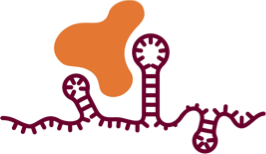lncRNAs in 3D – dissecting the gene regulatory function of long non-coding RNAs
Prof. Dr. Stefan Mundlos
The non-coding genome of vertebrates is pervasively transcribed. In fact, it has been found that approx. 80% of the genome is transcribed and the majority of these sequences are thought to be involved in gene regulation. A subset of these transcripts are long non-coding RNAs (lncRNAs), originally defined as transcripts longer than 200 bps that do not contain an open reading frame. Like mRNAs, these transcripts are spliced and polyadenylated. In spite of being poorly conserved, lncRNAs often have critical evolutionary conserved functions and are important components of the gene regulatory network. In a previous study we identified the lncRNA Maenli as the major regulatory of En1 expression in the limb where it functions as the initial switch to turn on En1 (Allou et al. Nature 2021). However, how Maenli and other cis-acting lncRNA work remains unknown. In this project we will study the gene regulatory function of cis-acting lncRNAs in their genomic context in vivo in the mouse using cutting edge technologies of genome engineering and synthetic biology. A major focus will be on the role of TADs and the 3D chromatin environment in respect to lncRNAs function. TADs are a region of high chromatin interaction where enhancers and promoters come into physical contact. They subdivide the genome into discrete genomic units that restrict the possible contacts enhancers can establish with target genes. A CRISPR/Cas9 based strategy is used to investigate the the biology of 3D genome configuration in vivo in mice. We hypothesize that cis-acting lncRNAs work within the context of the 3D chromatin environment of their respective TAD. The entire lncRNA locus of approx. 25 kb will synthesized using Transformation-Associated Recombination (TAR) in yeast. The synthetically produced fragment will then be inserted in mouse ES cells at different positions in and outside of the original TAD via a landing pad and PhiC31 integrase. The locus can then be further manipulated by interfering with its 3D conformation, e.g. by removing boundaries and/or other CTCF sites. The synthetic biology approach allows us to manipulate the locus easily, for example by replacing the promoter with another regulator, such as a well-studied BMP2 enhancer to test if we can direct expression in a BMP2-like fashion. In another approach, we can test the importance of splicing and polyadenylation by removing all introns, or the poly-A tail, respectively. Readout is, as in all aims, the mouse phenotype and En1 expression in the limb at developmental stage E10.5. Mice will be produced by our established ES cell aggregation system. These experiments will shed light on the specificities and the local requirements that lncRNAs need to function as gene regulators in a developmental context.

References
For more information have a look at the website of the Development & Disease group.
![[NEW] - Synthetic biology of long-range gene regulation](/4658649/teaser-1697451215.jpg?t=eyJ3aWR0aCI6MzYwLCJoZWlnaHQiOjI0MCwiZml0IjoiY3JvcCIsImZpbGVfZXh0ZW5zaW9uIjoianBnIiwib2JqX2lkIjo0NjU4NjQ5fQ%3D%3D--a3af74301214a9b60b8113d12a9a5741c7978c69)










